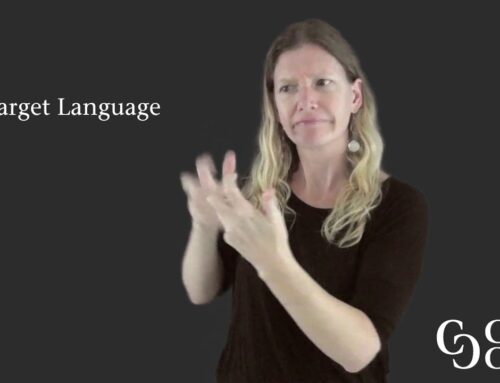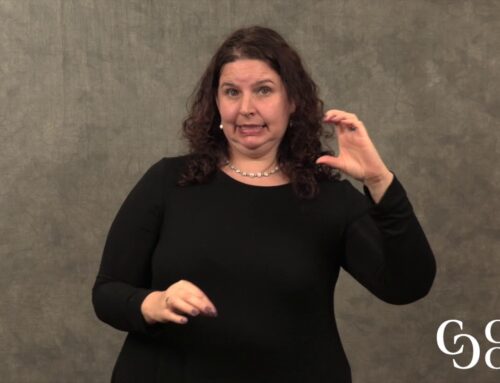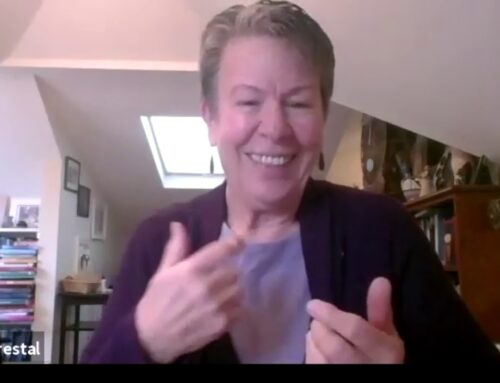 Developed by Arlene Narvaez
Developed by Arlene Narvaez
Competencies Addressed: Cultural competency, Assessing consumer language, Specialized knowledge;
Time Required for Activity: 30 mins
Objective:
- Identify 2 general steps required in the immigration application and interview process.
- Identify mode of communication used in Latinx culture
- Identify code switching technique used in Latinx culture
In this activity, you will be working with a series of videos related to a VRS call between a person using ASL and another person using spoken Spanish. You will be working on building your assessment skills of the language used as well as gaining knowledge about the immigration process.
Prediction: Meeting the Participants
Watch the “Meet the Participants.” This will introduce you to the two people on the call. Pay attention to the ways that they use language and think about how that will affect your interpretation.
View video. | View view with Spanish subtitles. | View view with English subtitles.
Focusing Question: As the interpreter, would you use usted or tú form with this call?
Prediction: The VRS Call
Watch this segment of the VRS call video until 1:07 seconds. Once you know what type of call this is, predict what type of questions the caller may have. Write vocabulary words in Spanish and English that may be used.
View video. | View view with Spanish subtitles. | View view with English subtitles.
Predicción: conozca a los participantes
Vea “Meet the Participants” (conozca a los participantes). Esto le dará a conocer las dos personas en la llamada. Preste atención a las maneras en que utilizan el lenguaje y piense en cómo eso afectará su interpretación.
ver el video | ver el video con subtítulos en español | ver el video con subtítulos en inglés
Pregunta de enfoque: Como intérprete, ¿cuál forma utilizaras, usted o tú, con esta llamada?
Predicción: La llamada de servicio relevo on video VRS
Vea el segmento de el video de la llamada VRS hasta 1:07 segundos. En cuanto se entiende qué tipo de llamada es, piensa en qué tipo de preguntas la persona que llama puede tener. Escribe palabras de vocabulario en español e inglés que pueden ser utilizadas.
ver el video | ver el video con subtítulos en español | ver el video con subtítulos en inglés
Check Your Work
What vocabulary items did you note as significant?
Here are some examples we noted:
Watch the Post-Call Reflections
- View reflections from hearing caller. | View hearing caller reflections with Spanish subtitles. | View hearing caller reflections with English subtitles.
Write what thoughts come to mind about the services the caller has received. What stands out about the hearing callers comments?
- View reflections from interpreter. | View interpreter reflections with Spanish subtitles. | View interpreter reflections with English subtitles.
Write your thoughts on the communication style the interpreter is referring to.
- What does the interpreter indicate is important about keeping up with current events with Latin American countries and Latin American pop culture, etc?
- What other suggestions does the interpreter make about things to know?
- What is the interpreter’s take away about trilingual interpreting work?
- What are your thoughts on trilingual interpreting in VRS settings?
Check your work
Here are some thoughts we had on the questions about the reflections from the hearing caller and interpreter. This is not the only answer, but is provided to support you in your analysis as something to compare your thoughts to.
Watch the Post-call interview with the Hearing caller:
Write what thoughts come to mind about the services the caller has received.
For example: She mentions good and bad experiences and gives her thoughts on possible reasons.
What stands out about the hearing callers comments?
For example: she says she forgets she’s talking to a deaf person when the interpreter is skilled, and she seamlessly switches to Spanish to finish her thoughts (code-switching).
Watch the Post-call interview with Interpreter:
Write your thoughts on the communication style the interpreter is referring to.
For example: she says in Spanish, you begin a sentence, and then everything after that sentence is implied. This refers to high context communication.
What does the interpreter indicate is important about keeping up with current events with Latin American countries and Latin American pop culture, etc? What other suggestions does the interpreter make about things to know?
For example: she suggests knowing common nicknames in Spanish
What is the interpreter’s take away about trilingual interpreting work?
What are your thoughts on trilingual interpreting in VRS settings?
VRS Call
Reflections from the Interpreter
Reflections from the Hearing Caller
Reflections from the Hearing Caller with Spanish subtitles
Reflections from the Hearing Caller with English subtitles
Reflections from the Interpreter with Spanish subtitles
Reflections from the Interpreter with English subtitles
VRS Call with Spanish subtitles
Start of VRS Call with Spanish subtitles
Start of VRS Call with English subtitles
VRS Call with English subtitles
Start of VRS Call
Meet the Participants with Spanish subtitles
Meet the Participants with English subtitles
Meet the Participants
VRS Call vocab
VRS Call vocab
VRS Call vocab
VRS Call vocab
VRS Call vocab
VRS Call vocab
VRS Call vocab
VRS Call vocab
VRS Call vocab
VRS Call vocab
VRS Call vocab
Translation by Doug Bowen-Bailey
I have had many experiences with interpreters, particularly in my journey through school, including my undergraduate and graduate experiences. (And I have just finished my graduate program. )
Most of my experiences with interpreters have been positive. I guess I would say that one thing I really appreciate about interpreters is if they are open to discussing the content of my courses. To talk with me about what I’m doing and where I am headed. Which makes me think about medical appointments. Medical appointments and academic settings are where I mostly work with interpreters.
I really appreciate interpreters who share their ideas about my class material or who are effective at matching my signing style. Some interpreters ask me directly for my language preferences. I usually respond that I want more ASL interpreting, but occasionally I will ask for more English-like signing so I can learn all of the technical terminology from the class content.
Another positive trait I see in interpreters is their openness and willingness to be friendly. This doesn’t mean that they lack professional boundaries and seek inappropriate information from me. Instead, they respect and acknowledge my humanity, rather than being too robotic in their approach. I have never appreciated interpreters who rigidly cling to a narrow role. That said, I do understand interpreters will have different personalities.
Most of my negative experiences with interpreters revolve around a lack of signing competency or an unwillingness to learn new things. If I share a new sign, some interpreters refuse to incorporate it. They might say that it is not what they learned or express skepticism about the legitimacy of the sign. I don’t appreciate comments like that.
Another negative experience really is just related to a general feeling of distance. I do understand that newer interpreters may have more rigid boundaries, but I am always open to connecting with interpreters who are warm and friendly. I don’t mean that we are going to be come super-close friends, just that we will be able to work together in a way that recognizes our common humanity.




